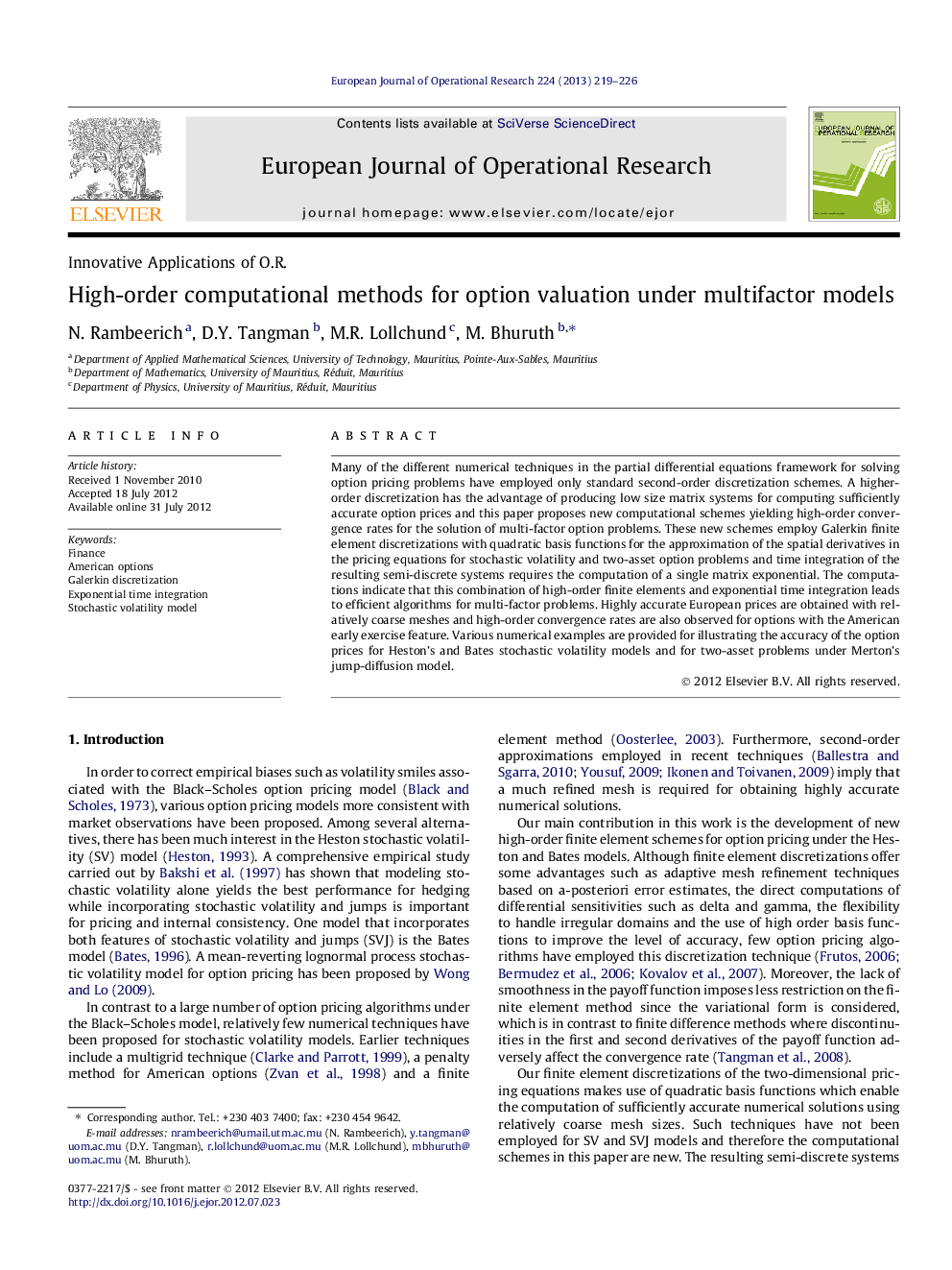| Article ID | Journal | Published Year | Pages | File Type |
|---|---|---|---|---|
| 476821 | European Journal of Operational Research | 2013 | 8 Pages |
Many of the different numerical techniques in the partial differential equations framework for solving option pricing problems have employed only standard second-order discretization schemes. A higher-order discretization has the advantage of producing low size matrix systems for computing sufficiently accurate option prices and this paper proposes new computational schemes yielding high-order convergence rates for the solution of multi-factor option problems. These new schemes employ Galerkin finite element discretizations with quadratic basis functions for the approximation of the spatial derivatives in the pricing equations for stochastic volatility and two-asset option problems and time integration of the resulting semi-discrete systems requires the computation of a single matrix exponential. The computations indicate that this combination of high-order finite elements and exponential time integration leads to efficient algorithms for multi-factor problems. Highly accurate European prices are obtained with relatively coarse meshes and high-order convergence rates are also observed for options with the American early exercise feature. Various numerical examples are provided for illustrating the accuracy of the option prices for Heston’s and Bates stochastic volatility models and for two-asset problems under Merton’s jump-diffusion model.
► We propose new computational schemes to price options under stochastic volatility models. ► High-order finite element discretisations of the pricing equations are carried out. ► Numerical results indicate highly accurate option prices on coarse meshes. ► We extend our methods to the pricing of two-asset American option problems.
